Step into the world of saas marketing where a single video on your landing page can become a conversion powerhouse, turning casual visitors into qualified leads eager to explore your product. This isn't just about flashy visuals—we're diving deep into a strategic playbook, unveiling how to craft video content that resonates with your specific audience, driving engagement, and ultimately boosting your bottom line.

Imagine seamlessly weaving video into your landing page's design, captivating viewers from the moment they arrive. Picture understanding which video formats speak loudest to different customer segments, and A/B testing your way to sky-high click-through rates. We'll explore a step-by-step guide to creating compelling explainer videos, optimizing them for search engines, and even aligning them with each stage of the buyer's journey. Get ready to unlock the full potential of video and transform your SaaS landing page into a lead-generating machine!
Clearly Articulate Your value proposition in the First Few Seconds

As a SaaS founder, you know that grabbing a visitor's attention within seconds is crucial. Your landing page video is your golden ticket to instantly communicate what your SaaS offering is all about and the value it delivers.
Things to Plan:
- Brainstorm the core problem your SaaS solves.
- Identify 2-3 key benefits users will gain.
- Draft a concise script that highlights these aspects within the first 10 seconds.
- Consider using captivating visuals or animations to quickly hook viewers.
Focus on the Why Behind Your Solution
Features are important, but they don't resonate as deeply as the why. Think about the pain points your target audience faces. Your landing page video content needs to go beyond features and connect on an emotional level.
Things to Plan:
- Conduct thorough customer research to understand their biggest challenges.
- Map your SaaS features to specific pain points and demonstrate the solutions they provide.
- Craft a narrative that showcases how your SaaS empowers users to achieve their goals and desired outcomes.
- Use customer testimonials or real-world examples to reinforce the why.
Demonstrate Real-World Applications
A compelling SaaS landing page video needs to show, not just tell. Users want to see your SaaS in action and how it benefits real people in various scenarios.
Things to Plan:
- Brainstorm relatable use cases that resonate with your target audience.
- Create short video clips showcasing these use cases, highlighting practical benefits.
- If possible, include diverse scenarios that showcase the flexibility and applicability of your SaaS.
- Use screen recordings, animations, or even customer-submitted video content to illustrate the real-world impact of your SaaS.
Emphasize Key Differentiators

The SaaS market is competitive. Your landing page video needs to clearly communicate what makes your product unique. Focus on the differentiators that truly matter to your ideal customer.
Things to Plan:
- Conduct a competitive analysis to understand the strengths and weaknesses of rival SaaS solutions.
- Identify 3-4 core differentiators that provide you a competitive advantage.
- Develop a concise and impactful message that highlights these unique selling points in your video content.
- Use visuals and data points to reinforce the superiority of your SaaS in specific areas.
Establish Credibility and Trust Through Social Proof
Trust is a crucial factor in the SaaS buying process. Building trust through social proof in your landing page video can significantly improve conversion rates.
Things to Plan:
- Identify satisfied customers who are willing to provide short video testimonials.
- Obtain permission to use client logos and display them prominently in the video.
- Incorporate industry awards, recognitions, or relevant statistics that showcase your SaaS's credibility.
- Include data points about your customer base or success stories (e.g., Used by over 10,000 businesses).
End with a Compelling Call to Action
A SaaS landing page video without a strong call to action is a missed opportunity. Guide visitors towards the desired next step in your SaaS product conversion funnel.
Things to Plan:
- Determine the primary goal of your landing page. (e.g., free trial signups, demo requests, contacting sales)
- Create a clear and concise CTA that aligns with this goal.
- Visually highlight the CTA within the video using text overlays and interactive elements if your platform allows it.
- Ensure the CTA button or link is prominently displayed on your landing page and easily accessible after the video ends.
Optimize Video Length for Attention Spans
A common SaaS landing page video mistake is making it too long. You need to respect your visitors' time and ensure your video content delivers maximum value within a reasonable timeframe.
In the fast-paced world of SaaS, you need to capture your audience's attention quickly. Research indicates that shorter videos often have better engagement rates.
Deep Dive:
- Analyze existing SaaS landing page video data from your competitors.
- Research industry benchmarks on optimal video lengths for SaaS products.
- Focus on concise storytelling; deliver key information without unnecessary fluff.
- Aim for video lengths under 2 minutes whenever possible.
- Test different video durations to see what resonates best with your specific audience using A/B testing tools.
Use Engaging Visuals and Graphics

High-quality visuals play a major role in capturing attention and improving the effectiveness of your SaaS landing page. Think about how you can make your video content more captivating.
People are drawn to visuals. Incorporating high-quality graphics and animations in your SaaS landing page video can greatly enhance its impact and appeal.
Deep Dive:
- Use professional-looking stock footage or create custom graphics and animations.
- Consider incorporating data visualizations or screen recordings to illustrate your SaaS features more effectively.
- Ensure your visuals align with your brand identity and the overall aesthetics of your landing page.
- Test different visual styles using A/B testing to identify what your target audience finds most engaging.
- If using animation, make sure it is well-produced and not overly simplistic or childish.
Implement Interactive Elements (Clickable CTAs, Polls, etc.)

Interactive video content can significantly improve your SaaS landing page's conversion rates by providing a more dynamic and personalized user experience.
Taking your SaaS landing page video to the next level means allowing viewers to interact directly within the video player. This fosters higher engagement and can boost your lead generation efforts.
Deep Dive:
- Explore video platforms or interactive video content creation tools that offer features like clickable CTAs, polls, quizzes, or branching narratives.
- Integrate CTAs strategically within the video timeline, prompting viewers to take action at relevant moments.
- Use polls or quizzes to gather valuable insights about your viewers and their needs.
- Personalize the video experience by using branching narratives based on viewer choices.
- Track the performance of interactive elements using analytics to identify what drives the most engagement and conversions.
Leverage Personalized Video Experiences

Personalization is becoming increasingly crucial in SaaS marketing. Tailoring your video content to address individual needs can dramatically improve its effectiveness.
In the era of data-driven marketing, you can leverage user information to make your SaaS landing page video more relevant and personalized for individual visitors.
Deep Dive:
- Use dynamic video content platforms that allow you to integrate viewer data (e.g., name, company) into your videos.
- Segment your audience based on demographics, behavior, or firmographics.
- Create variations of your SaaS landing page video tailored to different segments.
- Track engagement metrics for each personalized video to see which versions perform best.
- Consider utilizing advanced personalization techniques like dynamic sequencing to further optimize the user experience.
Experiment with Video Placement on the Landing Page

The position of your video on your landing page can greatly influence its visibility and impact on conversion rates. Strategic placement is key to success.
You've created an amazing SaaS landing page video, but where should it go on the page for maximum impact? Experimentation is crucial!
Deep Dive:
- A/B test placing the video above the fold (visible without scrolling) versus further down the page.
- Track scroll depth and time spent on page to see if different video positions affect user behavior.
- Consider embedding the video within the flow of your landing page content, rather than always featuring it at the top.
- Pay attention to the design aesthetics of your landing page and ensure the video player is integrated seamlessly.
- Analyze heatmaps to understand how users interact with your landing page and where their attention is focused.
Analyze Heatmaps and Scroll Depth to Optimize Video Engagement
Data is your friend! Analyzing user behavior on your landing page is vital for understanding how viewers are engaging with your video content.
Gain deeper insights into how your audience interacts with your SaaS landing page and your video content using tools like heatmaps and scroll depth tracking.
Deep Dive:
- Utilize heatmap software to visualize where users are clicking and focusing their attention on your landing page.
- Track scroll depth to understand how far users are scrolling down your landing page and if they are reaching your video content.
- Analyze if there are any patterns in viewer drop-off during your video. Identify areas where you might be losing engagement.
- Use A/B testing to try different placements for calls to action or other elements near your video to encourage continued engagement.
- Make data-driven adjustments to your landing page design and video content to improve user experience and engagement metrics.
Choose a Video Player that Complements Your Branding
As a SaaS founder, you've invested heavily in building a strong brand. Your video player should reflect that. A customizable player allows you to maintain visual consistency, incorporating brand colors and logo, ensuring a unified brand experience across all touchpoints. A jarring video player that clashes with your website's aesthetic can create a sense of distrust and unprofessionalism.
Things to Plan:
- Research video player options that offer customization features.
- Select a player that seamlessly integrates with your landing page platform.
- Test the video player's responsiveness across different browsers and devices.
- Ensure the player offers analytics to track video engagement.
Ensure Mobile-Responsive Video Playback
In today's mobile-first world, your SaaS landing page video content must be accessible across all devices. Imagine a potential customer landing on your page from their smartphone only to find a video that doesn't play correctly or takes up the entire screen.
This immediately creates a negative experience and drives them away. Implementing responsive design ensures your video scales and functions seamlessly across desktops, tablets, and mobile phones.
Things to Plan:
- Implement a responsive video embed code that adjusts to different screen sizes.
- Test video playback thoroughly on various mobile devices and operating systems.
- Optimize video file size for faster loading times on mobile connections.
- Consider using a video hosting platform that handles mobile responsiveness automatically.
Use Autoplay Strategically
Autoplaying video can be a powerful tool to capture attention, but it can also be intrusive if not used thoughtfully. Automatically playing video with sound can be jarring and disruptive, especially if the user is browsing in a quiet environment. Consider autoplaying your video with the sound muted and providing a clear play button, empowering users to choose when they want to engage with your saas video content. This approach balances engagement with respect for user preferences.
Things to Plan:
- A/B test autoplay with sound off versus no autoplay to assess impact on user engagement.
- If using autoplay, display a clear mute/unmute button for user control.
- Ensure autoplay functionality pauses when the user interacts with other page elements.
- Consider using autoplay only for short, visually engaging videos that don't rely heavily on audio.
Add Captivating Thumbnails to Encourage Clicks
Think of your video thumbnail as the movie poster for your SaaS product demo. It's the first impression that entices users to click and learn more. A bland or irrelevant thumbnail can drastically reduce your video's viewership. Select a visually appealing thumbnail that accurately reflects the content of your video and includes compelling visuals, branding elements, and a clear call to action.
Things to Plan:
- Design custom thumbnails that align with your brand and landing page aesthetics.
- A/B test different thumbnail variations to identify the highest-performing option.
- Use high-resolution images that are visually appealing and relevant to the video content.
- Consider adding text overlays to thumbnails to highlight key benefits or takeaways.
Provide Closed Captions and Transcripts for Accessibility
Making your SaaS landing page videos accessible is not only ethically responsible but also improves SEO and user experience. Not all viewers can or prefer to watch videos with sound. Providing closed captions and transcripts ensures that everyone, including individuals with hearing impairments, can understand your message. It also boosts your video's visibility in search engine results as search engines can index the text content.
Things to Plan:
- Include closed captions in your video editing process or use a captioning service.
- Ensure captions are accurate, synchronized with the audio, and easy to read.
- Provide downloadable transcripts of your videos in a text-based format.
- Add relevant keywords to your transcripts for improved SEO.
Utilize Video Backgrounds for a Dynamic Visual Impact
A well-placed video background can add a captivating and modern feel to your SaaS landing page. Instead of a static image, consider using relevant, high-quality footage to create a more dynamic and engaging experience. But remember, a cluttered or distracting video background can overshadow your main message. Select footage that is visually appealing, subtly reinforces your brand identity, and doesn't detract from the page's core content.
Things to Plan:
- Choose high-quality video footage that is relevant to your SaaS product and target audience.
- Ensure the video background is subtle and doesn't distract from the primary content.
- Optimize video file size for fast loading times to avoid impacting page performance.
- Consider using looping video backgrounds for a seamless visual experience.
Explainer Videos: Concisely Communicate value proposition and Key Features

In the fast-paced world of SaaS, capturing attention quickly is key. Explainer videos are perfect for this. Imagine trying to explain your complex software solution in a wall of text – most visitors would bounce off. An engaging explainer video, utilizing a mix of animation, screen recordings, and potentially even some live-action elements, can concisely convey your value proposition and highlight key features in a digestible and entertaining format. This leaves viewers with a clear understanding of what your software does and why they should care.
Explainer videos are the perfect way to introduce your SaaS product and clearly demonstrate how it addresses specific user pain points.
Deep Dive:
- Define your target audience and their specific challenges.
- Focus on the benefits of your SaaS, not just the features.
- Keep your video concise and engaging, aiming for a length of 1-2 minutes.
- Utilize a professional voiceover to add credibility and clarity.
- Include a clear call to action at the end of your video.
Demo Videos: Showcase the User Interface and Key Functionality
Think of SaaS demo videos as your show, don't tell moment. It's one thing to talk about how great your software is; it's another to let prospects experience it firsthand. A demo video provides a guided walkthrough of your software's interface, showcasing its functionality and ease of use. Potential customers can visualize themselves using your product, leading to increased engagement and conversion rates.
Demo videos enable potential customers to visualize themselves using your software and experience its core features.
Deep Dive:
- Start with a brief introduction of your software and its target audience.
- Showcase the most impactful features and workflows of your SaaS.
- Use screen recordings with clear voiceover explanations to guide viewers.
- Focus on real-world scenarios and how your software solves common problems.
- Keep your demo video concise and to the point, typically under 5 minutes.
Testimonial Videos: Leverage Social Proof to Build Trust and Credibility
In today's competitive market, trust is crucial for SaaS conversions. Think about it – are you more likely to try a new restaurant based solely on their menu description or based on glowing reviews from friends? Testimonial videos allow you to leverage the power of social proof. By showcasing real customers sharing their positive experiences with your software, you're building trust and credibility, encouraging potential customers to take that leap of faith.
Testimonial videos add credibility and build trust in your SaaS offering by showcasing the positive experiences of existing customers.
Deep Dive:
- Feature customers who represent your target audience.
- Focus on the specific benefits and results your customers have achieved.
- Encourage your customers to share authentic and compelling stories.
- Keep the videos short and focused on a few key takeaways.
- Ensure high production quality for a professional look and feel.
Product Tour Videos: Guide Users Through Specific Features and Workflows
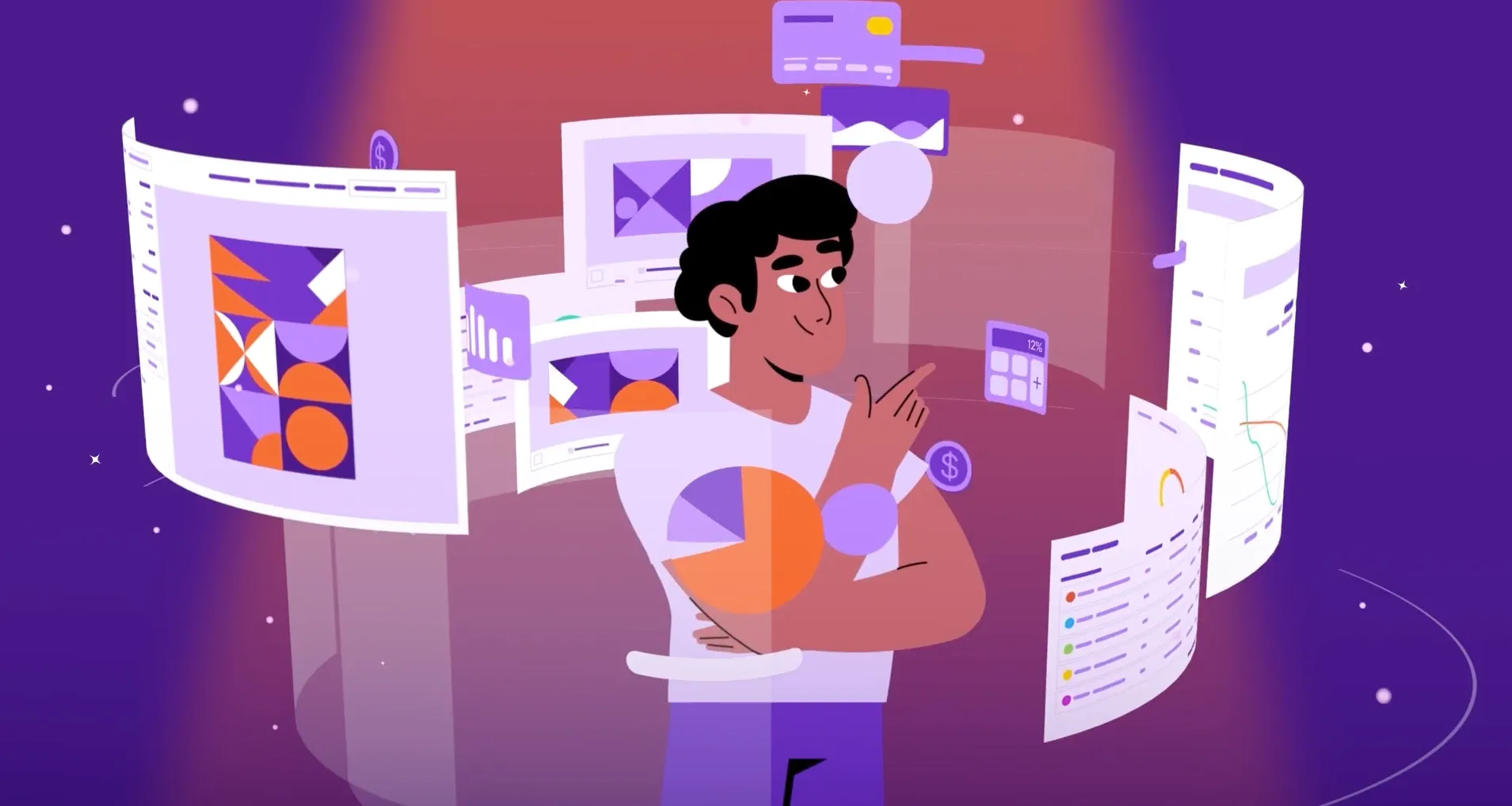
A product tour video is your chance to take prospects on a guided journey through specific aspects of your SaaS software. Imagine a new user signing up for your platform – wouldn't it be great to offer them a clear, step-by-step video tutorial to help them navigate through features and get started quickly? These targeted videos are invaluable for reducing churn, onboarding new users effectively, and helping users discover the full potential of your platform.
Product tour videos provide detailed guidance on using specific features or completing particular workflows within your SaaS application.
Deep Dive:
- Focus on one specific feature or workflow in each video.
- Utilize screen recordings and annotations to demonstrate each step.
- Keep videos short and focused, with clear explanations.
- Provide a table of contents for users to navigate different sections easily.
- Consider creating a series of videos for different aspects of your platform.
Case Study Videos: Demonstrate the Value of Your SaaS Through Client Success Stories

For potential customers hesitant to invest in your SaaS, case study videos can be the game changer. It's no longer about you claiming your product is effective, but about showing how it's solved real-world problems for others, similar to your target audience. By detailing the journey of your client, the problem they faced, how your SaaS provided a solution, and the measurable results they achieved, you create a compelling narrative that strengthens your value proposition and fosters confidence in your offering.
Case study videos provide real-world examples of how your SaaS has benefited other companies, highlighting quantifiable results and success stories.
Deep Dive:
- Feature a diverse range of client success stories from various industries.
- Interview key stakeholders from your client companies to gather firsthand testimonials.
- Use visuals and data to support the narrative and highlight key achievements.
- Showcase the positive impact your SaaS has had on your clients' businesses.
- Create shorter, teaser versions of the videos for sharing on social media.
Define a Clear Target Audience and Their Pain Points

Before you even think about scriptwriting or animation styles, understanding your target audience is paramount. Imagine shooting an arrow without aiming first – your SaaS marketing video will likely miss its mark. Deep dive into your ideal customer profiles: their demographics, industry, challenges, and aspirations. The goal is to understand their pain points intimately, so your video speaks directly to their needs and resonates on a personal level.
Tailoring your explainer video to a specific audience ensures that it addresses their unique needs and resonates with their specific pain points.
Deep Dive:
- Conduct market research to identify your ideal customer profiles.
- Create detailed buyer personas that represent your target audience.
- Analyze customer feedback and online reviews to understand their challenges.
- Define the specific pain points your SaaS product addresses for each segment.
- Use clear and concise language that speaks to your audience's needs.
Develop a Compelling Script that Focuses on Benefits, Not Just Features
Listing features is like reading a car's technical specifications – informative but ultimately not that engaging. Instead, paint a picture of how those features translate into real-world benefits for your target audience. Frame your SaaS video content in a way that highlights the positive outcomes users can achieve with your software, like increased productivity, cost savings, or better insights. Connect features to specific pain points you identified earlier, emphasizing how your software provides the solution.
Highlighting the benefits of using your SaaS product, rather than simply listing its features, makes the value proposition more compelling and engaging.
Deep Dive:
- Structure your script as a narrative that follows a problem-solution-result approach.
- Clearly define the problem your SaaS addresses and its impact on users.
- Showcase the features of your software as solutions to the problem.
- Emphasize the positive outcomes and tangible benefits of using your SaaS.
- Include a clear call to action that directs viewers to learn more or try your product.
Choose a Visual Style that Aligns with Your Brand Identity and Target Audience
The visual style of your video is just as important as its message. It needs to resonate with your audience and align with your brand identity. For a professional, corporate SaaS, live-action footage with interviews might be appropriate. But if your audience is young and tech-savvy, an animated explainer might be more effective. Explore different styles like animation, live-action, screen recordings, or even a combination. The goal is to find a style that both visually engages your target audience and reinforces your brand personality.
Choosing an appropriate visual style that resonates with your audience ensures your video captivates their attention and enhances message comprehension.
Deep Dive:
- Consider your target audience's demographics, preferences, and industry.
- Analyze the visual styles of your competitors and industry leaders.
- Evaluate the tone and personality you want to convey with your brand.
- Choose a visual style that is engaging, professional, and memorable.
- Work with experienced animators or video producers to achieve the desired style.
Utilize Strong visual storytelling Techniques to Keep Viewers Engaged
Humans are hardwired for stories. No one wants to be lectured by a SaaS landing page video. Instead of simply stating facts about your software, craft a narrative. Introduce characters or relatable scenarios that reflect the struggles of your target audience, build anticipation for the solution (your software), and end with a powerful visual showcasing the positive impact your product has. This makes your message not just informative, but memorable and impactful.
Engaging your audience with visually compelling stories keeps them invested in your message and makes your SaaS product more relatable.
Deep Dive:
- Craft a compelling narrative with a beginning, middle, and end.
- Introduce characters or scenarios that represent your target audience's pain points.
- Visually demonstrate how your SaaS provides a solution to these problems.
- Include visually compelling transitions, graphics, and animations.
- Use humor, empathy, or other emotions to connect with your audience.
Optimize Your Video for Search Engines with Relevant Keywords and Descriptions
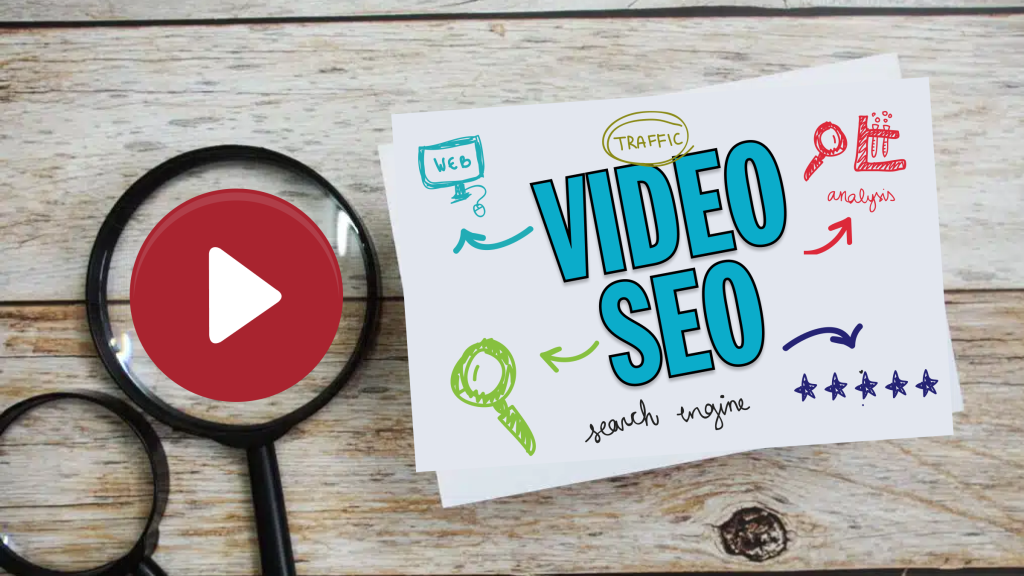
Creating an amazing SaaS video is only half the battle – you need people to find it. SEO plays a crucial role here. Treat your video like any other content: research relevant keywords your target audience is likely to search for. Integrate those keywords organically within your video title, description, and tags. A well-optimized video not only boosts your visibility in search results but also drives organic traffic to your landing page, extending your reach and attracting more potential customers.
Optimizing your saas explainer video for search engines ensures it is easily discoverable by your target audience, increasing reach and visibility.
Deep Dive:
- Conduct keyword research to identify relevant terms used by your target audience.
- Include your primary keyword in your video title and description.
- Add tags related to your SaaS product, features, and target audience.
- Create a compelling video transcript and add it to your video's description.
- Submit your video to relevant video directories and platforms.
Promote Your Explainer Video Across Multiple Channels to Reach a Wider Audience
Your SaaS explainer video isn't meant to live in isolation. Imagine producing a blockbuster film and only showing it in one small theatre – you're limiting its potential. Embed it strategically on your landing page, social media profiles, email newsletters, and any other platform where your target audience frequents. This omnichannel approach ensures maximum exposure, attracting prospects from various touchpoints and driving more traffic to your landing page.
Promoting your explainer video across multiple channels expands its reach, increasing brand awareness and generating leads from diverse sources.
Deep Dive:
- Embed your video on your website, particularly on relevant landing pages and blog posts.
- Share your video across your social media channels, targeting relevant groups and communities.
- Include your video in email marketing campaigns to engage prospects.
- Consider using paid advertising platforms to promote your video to a wider audience.
- Track video performance across channels to optimize your distribution strategy.
Maintain Brand Consistency Through Visual Elements and Messaging

Your SaaS landing page video shouldn't feel like a random clip plucked from the internet. It should be an extension of your brand, communicating your brand values and identity. Consistent use of brand colors, fonts, logo placement, and messaging across your website and video creates a cohesive and recognizable brand experience. This fosters trust and familiarity with your target audience.
Consistency across visual elements reinforces brand identity and builds a cohesive user experience, increasing brand recognition and trust.
Deep Dive:
- Use the same color palette in your video as you do on your website and marketing materials.
- Incorporate your company logo tastefully within the video intro or outro.
- Maintain consistent typography and font styles used on your landing page.
- Align the tone and language used in your video script with your brand's voice.
- Ensure all visuals and graphics reflect the quality and professionalism of your brand.
Utilize High-Quality Visuals and Graphics that Enhance Engagement
Imagine watching a film with blurry visuals and pixelated graphics – it immediately degrades the experience. Your SaaS product video deserves better. High-quality visuals, including professional-grade footage, custom graphics, and clear screen recordings, communicate your message effectively and make your content more credible. Poor visual quality, on the other hand, can signal a lack of professionalism and attention to detail, negatively impacting viewers' perceptions of your product and brand.
High-quality visuals enhance the viewing experience and communicate professionalism, leading to increased user engagement and positive brand perception.
Deep Dive:
- Invest in professional-grade filming or animation for the best results.
- Use high-resolution images and graphics that are visually appealing.
- Avoid using stock footage or graphics that appear generic or overused.
- Optimize video file sizes for optimal streaming without sacrificing quality.
- Ensure visuals are relevant to your message and target audience.
Optimize Video Speed and Pacing to Keep Viewers Engaged
No one wants to watch a SaaS landing page video that feels like it's moving through molasses. Slow-paced videos with long pauses can quickly lead to audience disengagement. Your video needs a dynamic flow. Find a balance between providing information clearly and keeping a visually engaging pace. Use transitions effectively, vary your shot composition, and adjust the speed of certain sections to maintain viewers' attention throughout.
Optimized video speed and pacing prevent viewer boredom and keep them invested in the content, ensuring they watch till the end and receive your intended message.
Deep Dive:
- Vary shot lengths and pacing to create visual interest.
- Use dynamic transitions and effects to seamlessly move between different segments.
- Avoid lengthy pauses or static scenes that can lead to audience disengagement.
- Test your video on different audience members to gauge their reactions to the pacing.
- Consider using music and sound effects to add rhythm and dynamics to your video.
Incorporate Clear and Concise Text Overlays to Highlight Key Messages
Many users browse the web with sound muted. Text overlays act as your silent voice ensuring key messages don't get lost. Use them strategically to highlight crucial points, reinforce your brand, or provide context to your video. Keep the text concise and readable, ensuring it doesn't obstruct the visual content.
Text overlays cater to users watching with sound off, providing crucial information and ensuring they don't miss key takeaways.
Deep Dive:
- Use bold, easy-to-read fonts for your text overlays.
- Ensure sufficient contrast between the text color and the background.
- Keep text concise and limit the number of words on screen at any given time.
- Use animations or transitions to make text overlays appear smoothly and engagingly.
- Place text overlays strategically within the video frame for optimal readability.
Choose Music and Sound Effects that Enhance the Viewing Experience
Music isn't just an afterthought in your SaaS product demo video. It's an emotion amplifier. The right background score sets the tone, whether you're aiming for a playful explainer or a corporate-style demo. Sound effects, when used thoughtfully, can add emphasis, create transitions, or provide audio feedback, further engaging your audience's senses. But be mindful of volume levels and genre – choose tracks that complement your message and aren't distracting.
Music and sound effects significantly contribute to the overall viewing experience, enhancing the video's emotional impact and brand recall.
Deep Dive:
- Select music that aligns with your brand's personality and video's tone.
- Ensure music volume doesn't overpower the voiceover or narration.
- Use royalty-free music to avoid copyright issues.
- Consider hiring a professional composer for a unique and custom soundtrack.
- Add sound effects subtly to highlight key moments and create dynamic transitions.
Prioritize Accessibility with Closed Captions and Alternative Text for Visuals
Accessible design ensures that all individuals, regardless of their abilities, can engage with your content. Offering closed captions on your SaaS videos makes your content accessible to users who are deaf or hard of hearing, and to those watching without sound. Alternative text for images and animation benefits visually impaired viewers by providing a textual description of visual elements when using screen readers.
Prioritizing accessibility enhances the inclusivity of your SaaS video content, reaching a wider audience and fostering positive brand perception.
Deep Dive:
- Provide accurate closed captions for all dialogue and narration.
- Ensure captions are synchronized with the video and easily readable.
- Add descriptive alt text for images and animated elements.
- Consider audio descriptions for complex visuals that convey key information.
- Test your video's accessibility features with assistive technologies to ensure proper functionality.
Test Different Video Thumbnails to Determine Which Perform Best
A thumbnail can make or break your video's view count. Consider it the storefront of your SaaS demo video. It's the first visual cue users see before deciding to engage. Experimenting with different thumbnail designs – with varying colors, visuals, text overlays, and calls to action – can reveal what best attracts your target audience. A/B testing allows you to track which thumbnails attract more clicks, providing valuable data for optimizing your video's performance.
Testing different thumbnails enables you to identify the most visually appealing and engaging option that drives higher click-through rates for your SaaS video content.
Deep Dive:
- Create multiple thumbnail variations, testing different colors, fonts, images, and calls to action.
- Use A/B testing software to randomly display different thumbnails to your visitors.
- Track the click-through rate (CTR) for each thumbnail to identify the winner.
- Analyze the data and identify common characteristics of high-performing thumbnails.
- Implement the winning thumbnail and continuously iterate based on further testing.
Compare Different Video Lengths to Optimize for Viewer Engagement

There's no one size fits all when it comes to SaaS video content length. While you want to deliver enough information to inform, exceeding a certain threshold can cause viewer fatigue and lead to drop-offs. Testing shorter and longer versions of your video will help identify the ideal duration that maximizes viewer engagement and retention. This optimization ensures your message is conveyed effectively without exceeding the attention span of your audience.
Testing different video lengths enables you to identify the optimal duration that maintains viewer engagement while effectively delivering your message, improving completion rates and overall video impact.
Deep Dive:
- Create variations of your video with different lengths, keeping the core message consistent.
- Use A/B testing tools to show different video length variations to website visitors.
- Track video engagement metrics such as average watch time, drop-off rates, and play rate.
- Analyze the data to identify the video length with the highest engagement and completion rate.
- Implement the winning length for future SaaS videos targeting a similar audience.
Test Different Calls to Action to Identify the Most Effective Approach
Your SaaS landing page video is an opportunity to drive action. However, vague or weak calls to action will yield lackluster results. Learn more is less effective than Start your free trial today. Testing variations in the wording, placement, and design of your CTA buttons can significantly impact conversion rates. Analyzing the data reveals which CTA version drives more clicks, leads, and trial signups, informing you of what resonates most strongly with your audience.
A/B testing different calls to action helps identify the most effective wording and placement that motivates viewers to take the desired action, ultimately driving conversions and lead generation for your SaaS product.
Deep Dive:
- Experiment with various CTA copy, using action-oriented language that aligns with your campaign goals.
- Test different button colors, sizes, and designs to evaluate their impact on click-through rates.
- Consider experimenting with the placement of CTA buttons within your video and on the landing page.
- Track the click-through rates and conversion rates for each CTA variation to determine the winner.
- Implement the most successful CTA and continuously refine based on future A/B testing data.
Analyze User Engagement Metrics to Identify Areas for Improvement

Relying on gut feeling alone when creating SaaS video content can be risky. Analyzing data is crucial to uncover how viewers interact with your video. Track metrics like watch time, drop-off points, play rate, click-through rate on CTAs, and social sharing. Understanding where viewers lose interest or take action pinpoints what needs improvement – perhaps certain sections are too lengthy, visuals aren't engaging enough, or the call to action isn't compelling. These insights are essential for iteratively improving your video's effectiveness.
Analyzing user engagement metrics reveals valuable insights into how your audience interacts with your SaaS landing page video, allowing you to make data-driven decisions for continuous improvement.
Deep Dive:
- Track video metrics such as play rate, average watch time, audience retention, and drop-off points.
- Analyze click-through rates on CTA buttons and links within your video.
- Use heatmaps and scroll maps to identify areas of the landing page that receive the most attention.
- Gather qualitative feedback from viewers through surveys or comment sections to gain deeper insights.
- Segment your audience based on demographics or engagement behavior to analyze performance for specific groups.
Iterate on Video Content Based on A/B Testing Results
A/B testing isn't a one-off exercise. Treat it as an ongoing process of continuous improvement for your saas marketing video content. Each round of testing provides valuable data that should inform the next. Did one thumbnail outperform others? Great, refine the elements that worked and test further iterations. Are viewers dropping off at a certain point in the video? Consider shortening that section or enhancing the visuals. This iterative approach to video optimization ensures you're always adapting and improving, leading to ever-increasing engagement and conversion rates.
Implementing learnings from A/B tests enables iterative refinement of your SaaS landing page video content, optimizing it for improved performance, enhanced user engagement, and better conversion rates.
Deep Dive:
- Based on testing results, make informed decisions about modifications to video content, design, and CTAs.
- Document your testing process and findings for future reference.
- Develop a testing schedule and regularly analyze video performance metrics.
- Encourage a culture of data-driven decision-making in your marketing team.
- Share testing results and insights across departments to foster collaborative improvement.
Utilize Heatmaps and Scroll Depth Analysis to Understand Viewer Interaction with Video and Landing Page
Heatmaps and scroll depth tools provide a visual representation of user interaction on your landing page. You'll see where users click, scroll, and linger, which allows you to discover whether your video's placement effectively attracts attention. It can also identify usability issues that affect video performance, like the video player being too low on the page or the CTA button being obscured on mobile screens. These insights enable strategic design improvements to maximize the impact of your SaaS product video within the context of your landing page.
Understanding how users navigate your landing page through heatmaps and scroll maps offers valuable insights to optimize video placement and call to action visibility for enhanced user engagement.
Deep Dive:
- Implement heatmap tracking on your landing page using tools like Hotjar or Crazy Egg.
- Analyze mouse movements, clicks, and scroll depth to identify areas of high user engagement.
- Identify drop-off points on the page to determine areas where users might lose interest.
- A/B test different video placements on the landing page based on heatmap data.
- Optimize the placement of your call to action button based on scroll depth analysis to maximize visibility.
Define Specific, Measurable, Achievable, Relevant, and Time-Bound (SMART) Goals for Your Videos
Shooting a SaaS marketing video without defined objectives is like wandering through a forest without a compass. You need a clear destination – are you aiming for brand awareness, lead generation, or driving trials? SMART goals, ensuring each objective is Specific, Measurable, Achievable, Relevant, and Time-Bound, provide this focus. This specificity is critical for choosing the right video content, platform, and metrics for your campaign.
Establishing SMART goals ensures that your video content has a clear purpose, facilitates accurate performance measurement, and keeps your efforts focused on achieving desired business outcomes.
Deep Dive:
- Define specific objectives for your SaaS video, such as increasing brand awareness, generating leads, or driving trial sign-ups.
- Quantify your objectives, e.g., increase trial sign-ups by 15% in the next quarter.
- Ensure your goals are attainable with your resources and available timeframe.
- Verify your video objectives are relevant to your overall business goals.
- Establish a clear timeframe for achieving your video marketing objectives.
Track Key Performance Indicators (KPIs) like Watch Time, Click-Through Rates, and Conversion Rates
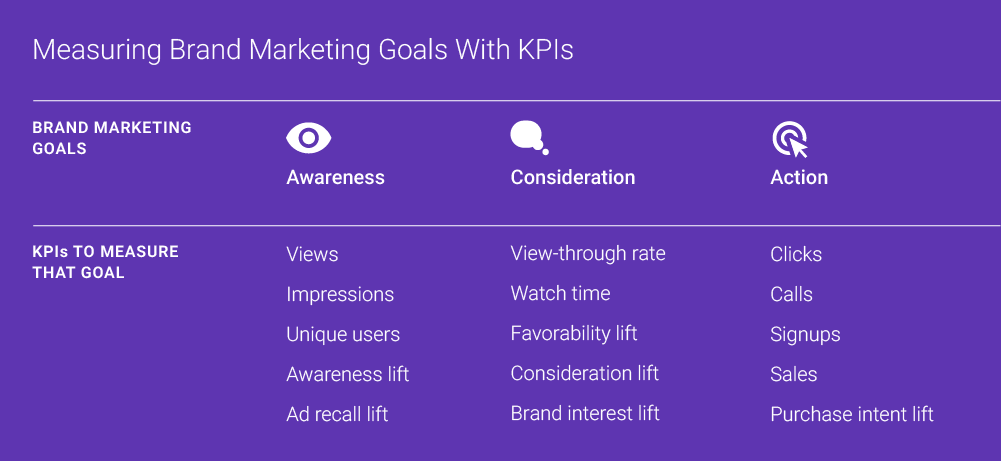
Creating your SaaS video is just the first step – now you need to monitor how it performs. Identifying and tracking KPIs aligns with the measurable aspect of your SMART goals. Are you seeing high completion rates (indicating engaging content)? How many viewers click your CTA after watching the video? Are these views converting to free trials or demos? Monitoring these metrics provides an understanding of what's working and what needs to be tweaked.
Tracking KPIs enables data-driven performance evaluation of your video content, identifying strengths and weaknesses, and enabling evidence-based optimizations for future iterations.
Deep Dive:
- Use video analytics platforms such as YouTube Analytics or Vimeo to track key metrics.
- Monitor watch time, play rate, average view duration, and audience retention to understand user engagement.
- Track click-through rates (CTR) on call-to-action buttons and links within your video.
- Analyze the conversion rate of video viewers to trial sign-ups or demo requests.
- Integrate video performance data with your website analytics platform to understand user journeys.
Integrate Video Analytics with Other Marketing Data to Gain a Holistic View of Campaign Performance
SaaS video marketing doesn't operate in a vacuum. Understanding its role within your overall marketing efforts is key. Don't analyze your video metrics in isolation. Integrate them with data from your other channels – are you seeing an increase in organic website traffic after posting the video on social media? Are certain paid advertising campaigns driving more high-quality leads who are more likely to watch your explainer video? This holistic view helps you pinpoint the most effective content, channels, and tactics.
Integrating video analytics with other marketing data enables comprehensive campaign performance analysis, reveals synergies between channels, and optimizes resource allocation for improved ROI.
Deep Dive:
- Connect your video analytics platform with your CRM and website analytics tools.
- Analyze the impact of your video on organic traffic, social media engagement, and lead generation efforts.
- Attribute conversions and revenue to specific video campaigns using multi-touch attribution models.
- Identify audience segments that engage most effectively with your videos.
- Refine your overall marketing strategy based on the insights gained from integrated data analysis.
Align Video Content with the Different Stages of the Buyer's Journey
Tailor your video messaging to address the specific needs and concerns of prospects at each stage of their journey, from awareness to decision.
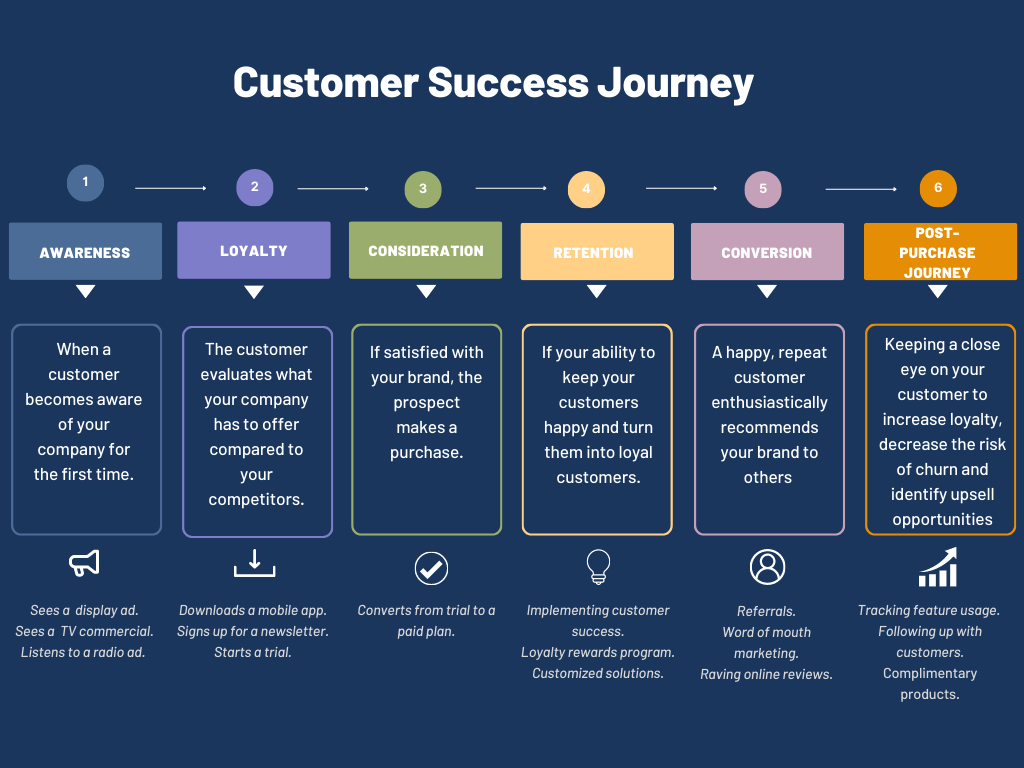
Creating video content specifically targeted at each stage of your SaaS product's conversion funnel can significantly boost engagement. For instance, during the awareness stage, a SaaS landing page video focusing on a high-level industry problem resonated more with potential customers than a deep product demo. By strategically using videos, we guide potential customers down the path of becoming paying customers.
Things to Plan:
- Identify the core message for each buyer stage (awareness, consideration, decision).
- Match video formats to each stage (e.g., explainer videos for awareness, product demos for consideration).
- Craft clear calls-to-action (CTAs) tailored to moving viewers to the next stage.
- Research how your competitors use landing page videos across different buyer journey stages.
- Continuously measure and iterate on your approach.
Use Video to Nurture Leads and Move them Further Down the Sales Funnel
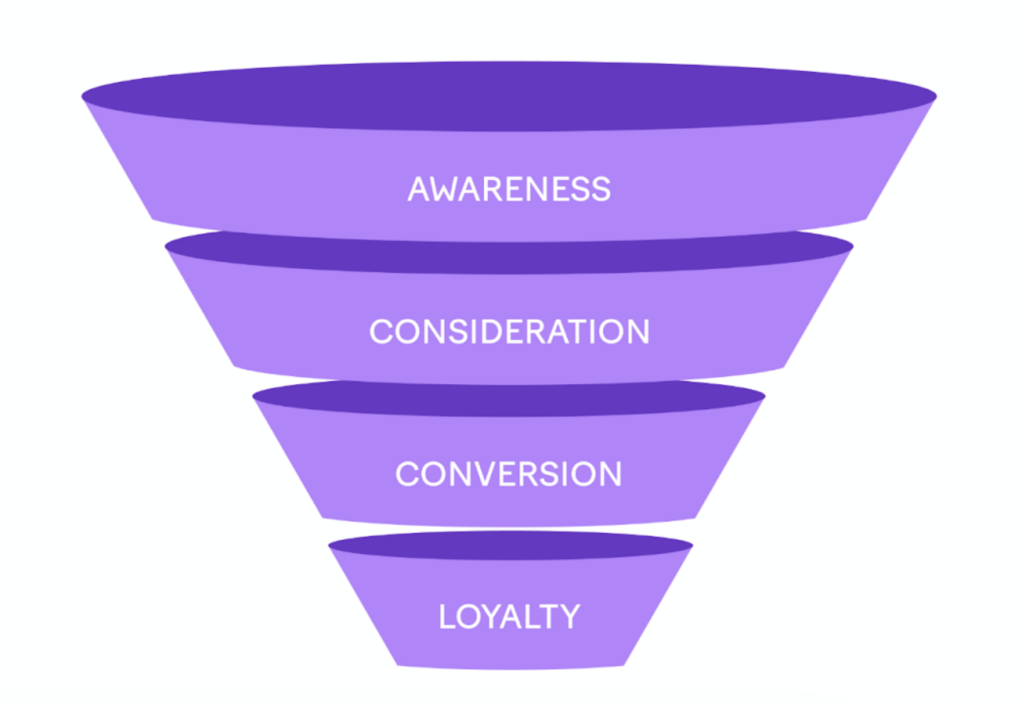
Develop targeted video content that educates and engages prospects, guiding them towards making a purchase decision.
A well-crafted SaaS landing page video can effectively educate leads about the value proposition of your product. Rather than static text or long-form content, engaging video content can bring your SaaS product to life, especially in today's fast-paced world. By nurturing these leads with the right video content, we see a greater likelihood of them becoming qualified opportunities and eventually paying customers.
Things to Plan:
- Create a series of videos that tackle common objections or answer frequently asked questions about your SaaS.
- Implement email workflows that automatically deliver relevant video content to leads at different stages.
- Consider incorporating interactive elements in your video content like polls or quizzes to engage leads further.
- Track which videos generate the highest conversion rates from lead to qualified opportunity.
- Optimize SaaS video content based on viewer analytics to make them more effective lead nurturing tools.
Measure the Return on Investment (ROI) of Your Video Marketing Efforts

Track the impact of video on your bottom line by measuring its contribution to lead generation, sales, and customer acquisition costs.
It's tempting to create stunning video content, but if it doesn't directly contribute to revenue, then the resources might be better allocated elsewhere. With clear KPIs in place, we can quantify the success of your SaaS landing page videos. For example, are videos lowering our cost per lead (CPL)? Are those leads converting to paid customers at a higher rate after engaging with your videos? Such measurement is essential to make data-driven decisions about the effectiveness of your video marketing.
Things to Plan:
- Define specific KPIs tied to the impact of video content on your sales funnel (e.g., conversions from a landing page after watching a video).
- Use analytics platforms to track viewer engagement, conversion rates, and overall ROI.
- A/B test different versions of your landing pages with and without videos to quantify the impact of videos on your key metrics.
- Experiment with different CTAs within your video content to see what resonates best with your target audience.
- Create custom reports that translate video performance metrics into tangible business impact.

Develop Buyer Personas to Understand the Unique Needs and Preferences of Each Segment:
Research and define detailed profiles of your ideal customers, including their demographics, psychographics, pain points, and goals.
Understanding the target audience is crucial for creating effective SaaS landing page videos. Imagine your typical enterprise customer, who values security features above all else. Then consider a startup, which likely prioritizes affordability and ease of use. The video content resonating with each segment will vary drastically. If you understand these differences through thorough persona development, your video marketing becomes incredibly targeted.
Things to Plan:
- Conduct in-depth market research to understand the distinct segments that use or could potentially benefit from your SaaS product.
- Interview current customers across various segments to gather direct feedback on their experiences and pain points.
- Analyze landing page analytics and heat maps to better understand how different segments engage with your website's content.
- Develop a detailed profile for each segment with relevant details like industry, job title, business challenges, and their preferences regarding content consumption.
- Refer back to your persona insights regularly to ensure your Video Marketing Strategy stays aligned with the needs of your target segments.
Create Separate Landing Pages with Tailored Video Content for Each Segment:
Customize landing pages and video messaging to address the specific challenges and interests of each customer segment.
Imagine running paid advertising campaigns that direct each segment to a generic landing page, with a video that attempts to please everyone. Conversions likely suffer in this approach. Instead, personalized landing pages with segmented video content allow you to be hyper-targeted. We tailor the whole experience - from visuals to script to CTA. Your Enterprise lead lands on a page speaking their language, highlighting robust integrations and security. Your Startup lead lands on a different page showcasing intuitive UX and quick setup, demonstrating how this SaaS helps them launch faster.
Things to Plan:
- Based on your buyer personas, map out which key segments you will target with personalized landing pages and video content.
- Plan out the video messaging and tone of voice specific to each segment's priorities.
- Tailor the landing page design elements and overall UX to each segment (e.g., different imagery, use cases, etc.).
- Design clear A/B testing plans to further optimize the different segment-specific landing pages and video content.
- Ensure clear tracking of KPIs (conversions, engagement) on each segmented landing page to determine the success of your tailored efforts.
Utilize Personalization Techniques to Deliver Relevant Video Experiences
Incorporate viewer data to dynamically adjust video content based on individual preferences and browsing behavior.
Taking the previous example, we could utilize personalization features of many video hosting or marketing platforms. A user's cookies could indicate their interest is primarily integrations with CRMs (e.g., if they are coming from an article on CRMs), allowing us to adjust the SaaS landing page video to showcase that feature upfront. This data-driven adjustment goes beyond segmenting landing pages to provide even greater precision within those segments, boosting engagement significantly.
Things to Plan:
- Identify potential data points to be collected to aid in personalization (e.g., company size, location, previous page visits, or whitepaper downloads).
- Choose video platforms with built-in dynamic content or personalization features.
- Develop different video variations focusing on specific aspects of your SaaS product and map them to corresponding user data or interest signals.
- Consider branching narratives within your videos allowing viewers to choose their own paths based on their interests.
- Monitor viewer engagement within your video content analytics to determine the effectiveness of your personalization strategy.
Use A/B Testing to Determine Which Video Content Resonates Most with Each Segment
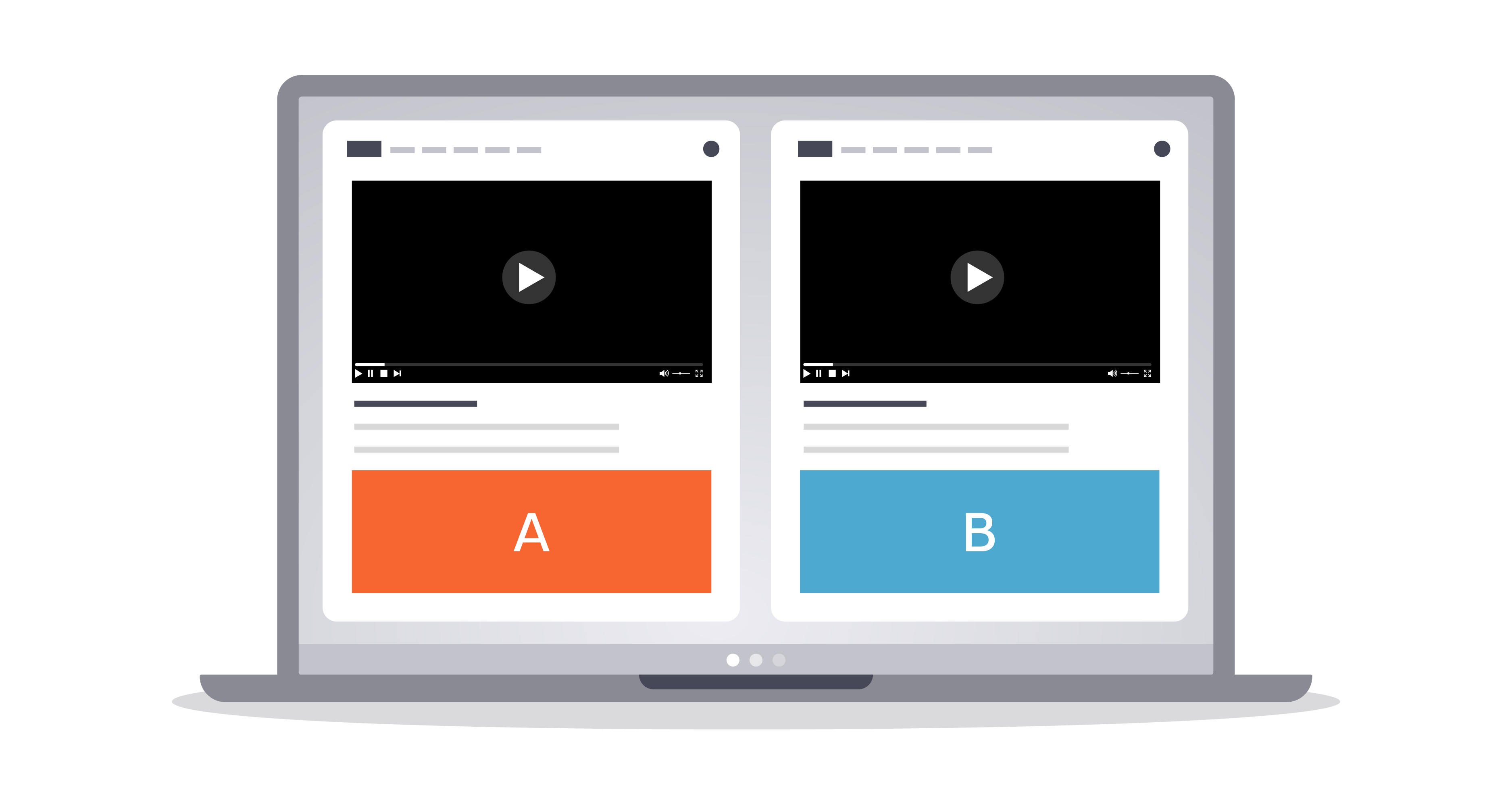
Experiment with different video formats, messaging, and calls to action to identify what works best for each target group.
The only way to fine-tune your SaaS video marketing is by using real-world user behavior. After tailoring videos to segment-specific landing pages, we test. For example, segment A may get a short animated explainer video focusing on ease-of-use in variation 1, and a detailed product demo in variation 2. For segment B, we test videos highlighting scalability. Careful observation of which variations generate greater engagement and conversions helps determine future investment and refine our overall strategy.
Things to Plan:
- Establish clear A/B test objectives and hypothesis regarding the potential performance of different video variations.
- Create multiple video variations for each target segment that focus on different aspects of your SaaS or feature diverse communication styles.
- Utilize a split testing platform and integrate it with your analytics setup to monitor metrics tied to your test objectives.
- Test multiple elements within your video – not just the type of video, but elements such as calls-to-action, length, thumbnail images, and intro styles.
- Allocate enough traffic and duration to each test to ensure statistically significant results.
Leverage Video Analytics to Track the Performance of Your Segmented Video Campaigns
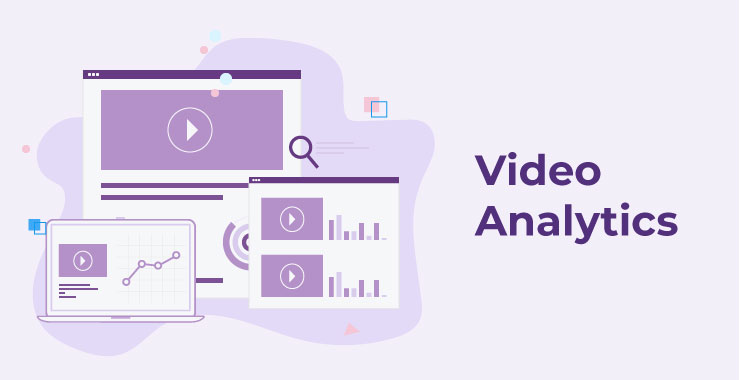
Monitor engagement metrics and conversion rates for each segment to measure the effectiveness of your personalized approach.
Once our campaigns are live, robust analytics guide optimization. Beyond vanity metrics like views, we dive deeper: Which parts of a video content had the highest drop-off for segment X? Are click-through rates on our Request a demo CTA higher on personalized landing pages vs. generic ones? This deep understanding tells us what works, informing future creative direction, improving lead nurturing sequences, and tailoring every stage of your SaaS marketing efforts to each target segment more effectively.
Things to Plan:
- Determine the key engagement metrics you will use to evaluate your segmented video campaign performance (e.g., watch time, average view duration, CTR on CTAs, drop-off points).
- Implement analytics dashboards or reports that clearly display the performance metrics for each target segment separately.
- Establish benchmarks to assess the effectiveness of your video marketing for different segments based on their respective industry averages or previous campaign performances.
- Schedule regular reports and analysis of your segment-specific data to monitor performance trends over time.
- Create reports that can clearly highlight any necessary adjustments to your video marketing based on performance insights.
Continuously Refine Your Video Content and Targeting Strategies Based on Performance Data

Use insights from data analysis to optimize your video content and ensure it remains relevant and engaging for each customer segment over time.
This point closes the loop, highlighting how effective SaaS video marketing is an ongoing iterative process. For instance, if your data indicates segment A prefers interactive explainer videos over talking head videos, but your competitor's research leans the other way, the only truth comes from your own testing. Based on your insights, you could experiment with making the interactive explainer videos longer, potentially by integrating testimonials about features previously seen as having higher drop-off rates. Data helps improve even effective efforts to maximize their impact.
Things to Plan:
- Establish a consistent feedback loop to implement necessary adjustments based on insights gained from data analysis.
- Define clear escalation paths and processes for reporting issues or significant performance variations to relevant teams or decision-makers.
- Design regular content audits and revision plans to ensure your video content stays relevant and effective.
- Schedule regular feedback sessions with your creative team, sales team, and even some representative customers from each segment to discuss data insights and gather new ideas for optimizing future video content.
- Establish a culture of ongoing experimentation with different approaches to video content, formats, and even distribution channels based on learning and insights.
Conclusion:
As we conclude this deep dive into SaaS landing page videos, remember that crafting effective content isn't a one-size-fits-all endeavor. It's about understanding your unique audience, their pain points, and where they are in their buyer journey. Your videos need to provide value, whether that's by concisely explaining your value proposition, showcasing real-world applications, or building trust through social proof.
High-quality visuals, strategic placement, and mobile responsiveness are vital components of your video's success. Pay attention to pacing and accessibility features like closed captions. Don't underestimate the importance of A/B testing various elements, from thumbnails and calls-to-action to video length. This iterative approach will empower you to continuously improve your content, maximizing engagement and conversions.
Finally, keep in mind that your video efforts should be tightly integrated into your broader marketing strategy. Defining specific, measurable goals, and meticulously tracking key performance indicators like watch time, click-through rates, and conversions is paramount. Don't view video as an isolated tactic – it’s a powerful component that can boost brand awareness, nurture leads, and ultimately drive revenue.
As a SaaS founder navigating a competitive landscape, investing in a strategic approach to video marketing can significantly elevate your landing page's effectiveness. Remember, it's not just about creating stunning visuals; it's about forging a genuine connection with your audience and compelling them to take the next step on their path to becoming your customers. Through thoughtful planning, ongoing optimization, and continuous learning, you can harness the full potential of video and unlock new levels of success for your SaaS product.













